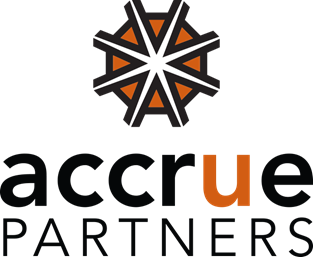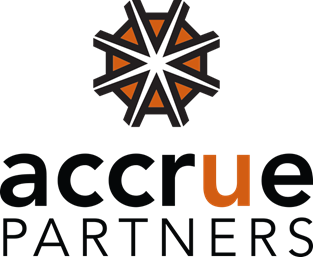
When you’re submitting a resume for a job, there’s often a lot of competition – especially for online job postings.
According to a 2021 report by Zippia, online job postings receive an average of more than 250 resumes each! And only 2% of those resumes land the candidate a job interview.
Employers spend an average of only 6 seconds to scan a resume and decide whether or not to put it in the discard pile or move it along to the interview stage. That’s why, when you’re submitting a resume, you want to tailor each version to the specific job you’re applying for. A one-size-fits-all resume may not cut it when there are a lot of applicants for a position.
Use these tips to tailor your resume for the role you’re applying for.
Start with a Strong Summary Statement
Any resume you submit should have your correct, professional contact info, including your name, phone number, email address and a link to your LinkedIn profile. The next section that can grab the hiring manager’s attention is your summary statement.
This is typically a paragraph near the top of the resume that summarizes:
- The length of time you’ve had experience that pertains to the role you’re applying for and examples of what types of roles you’ve had: 27+ years of radio / TV broadcasting experience as Creative Director, multimedia strategist, advertising and content producer, TV show founder and on-air personality.
- Soft and hard skills that apply to the job you’re submitting a resume for: Innovative enterprise agile coach leading business process and IT optimization efforts using lean Six Sigma, engineering best practices and IT service management.
- How you visualize yourself as a professional in this specific industry and what characterizes you as a significant contributor: Effective people manager focused on improving business outcomes, employee engagement, collaboration and relationship building.
It’s a good idea to look carefully at the job description of what you’re applying for, think about what relevant experience you have pertaining to that job, then write a summary statement that relates to the role. Since a summary statement is typically at the top of a resume, this is your best opportunity to motivate a hirer to keep reading your resume.
Tailor Skills to the Role
You might also include a Core Competencies or Top Skills section on your resume. These may be bulleted, so a hirer (or applicant tracking system) can scan through and identify skills that relate to the role you’re applying for.
You might have around 15 skills listed on your resume. Depending on your experience, you might have dozens more skills you could swap out if they’re a better fit for the role you’re applying for. Pay attention to this section and use the space to highlight the top skills you have that relate to the role you’re applying for.
Title
The title you list on your resume can also be a way to retain hirer attention. Typically, you’d list this under your name near the top of your resume.
Some people choose to list a title that reflects their highest position (“Senior Director”) or their current role and industry (“Financial Advisor”). If you have diverse job experience, look at what title you’ve had that relates most to the role.
For example, say you’ve been both a Social Media Specialist and a Public Relations Director. The role you’re applying for is Marketing Manager. Given your experience, you might list the title “Marketing Manager” under your name, since it’s relevant and relates directly to the new job you’re applying for.
Career Highlights
A Career Highlights section on a resume is typically another bulleted list section, where you list two to four career achievements that highlight your expertise related to the job you’re applying for. You might have a top three overall in your mind, but this is another section where you can personalize what you list based on the role.
For example, say you’re applying for an IT Executive position. One of your career achievements was when in your role as IT Manager, your company thwarted a cybersecurity attack to prevent $6M in sensitive assets from being stolen.
Since you’re applying for an Executive position where qualities like leadership and strategy matter, you might highlight how you led, inspired and managed your team through the attack.
Again, look at the job description for what you’re applying for. See what types of skills and qualifications are required. Think about how you can weave those into your Career Highlights section.
Other Sections
For the other sections of your resume, it might be more difficult to customize the content, but there are still some tweaks you can make to ensure your resume is the most relevant it can be to the job you’re applying for.
Work Experience
Your Work Experience section is typically a section that lists, chronologically starting with the most recent position, each job you’ve had. If your experience is diverse, you may want to feature the most relevant experience first instead of listing positions chronologically.
Gaps on resumes may be red flags to hirers, though. Keep in mind that if you shift around the order of the positions, you’ll still want to include your most recent experience somewhere or add an Additional Experience section where you can list your recent jobs.
As you detail your duties and achievements for each role, think about how you can put more emphasis on ones that relate to the job you’re applying for.
Education
Typically, degrees like bachelor’s, master’s and doctorate degrees take priority for what hirers are looking for. If a job description requires a degree, you’ll want to list that first.
You may have other credentials or certifications. With those, prioritize ones that are active, as well as ones that relate to the job you’re applying for.
Technical Skills
A Technical Skills section may look different from the Core Competencies section. For example, most people in knowledge worker positions today use various technology software and systems. For roles in areas like HR or corporate support, this section enables you to list the technology you use. For someone in IT, you might list certain technical skills in a Core Competencies section if those are required for the job you’re applying for.
In Technical Skills, you can list as many tools you’re familiar with as you’d like to show your breadth of knowledge. But pay attention to ones that are listed in the job description, and list those first.
Organizations / Awards / Volunteerism
Organizations, Awards and Volunteerism sections are also areas where you can list whatever experience or achievements you have. For Organizations and Awards, focus on listing ones that relate to the job you’re applying for. For Volunteerism, prioritize listing any volunteer work you’ve done with organizations in the local area of the job you’re applying for, since the hirer may be familiar with them.
If you don’t belong to relevant Organizations or Volunteerism groups, or you haven’t won Awards that pertain to your industry, it’s still helpful to add whatever experience and achievements you do have. That shows employers you’re well-rounded and involved with your industry and community.
Ready for Your Job Search?
Since resume submissions can be competitive, it may be helpful to work with a resume writer or get a second (or third) pair of eyes on your resume before you submit it. Write each resume through the lens of the hiring manager of the job you’re applying for. Think about how you can effectively communicate your experience and make it relevant for that particular job.
When you’re looking for work in areas like accounting and finance, IT, digital marketing, HR, financial services or corporate support, check out the Accrue Partners job bank. We help top companies source qualified talent. Begin your job search today.





